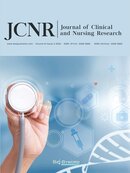Abstract
Artificial intelligence can effectively improve the efficiency and accuracy of medical diagnosis, clinical data analysis, medical image recognition, treatment plan decision-making, etc. It has broad application prospects in the ophthalmic diagnosis, treatment, and nursing industry. However, the application of artificial intelligence in the ophthalmic diagnosis and nursing industry in China started relatively late, and there are insufficient ophthalmic diagnosis and nursing personnel who are familiar with artificial intelligence technologies. In order to promote the modernization of ophthalmic medicine in China and accelerate the development of a high-quality and modern medical education system, it is necessary to train a new generation of compound ophthalmic medical talents who are skilled in artificial intelligence and develop an advanced talent training model that meets the needs of the ophthalmic profession and the society. Based on the application status and development prospects of artificial intelligence in the ophthalmology industry, this paper analyzes the current medical education model in ophthalmology, examines the path of cultivating compound talents in ophthalmic diagnosis, treatment, and nursing, as well as proposes suggestions for developing a high-quality and modern medical education system.
References
Yin Y, Xi X, 2020, The Latest Progress in Intelligent Diagnosis Methods for Ophthalmic Diseases. Journal of Shandong University (Health Sciences), 58(11): 33–38.
Zhao Q, Shen L, Lai M, 2018, Application Progress of Artificial Intelligence Technology Based on Machine Learning in Ophthalmology. International Journal of Ophthalmology, 18(09): 1630–1634.
Sun T, Zhang Y, Shao Y, 2020, Artificial Intelligence and Its Application in the Diagnosis and Treatment of Ophthalmic Diseases. New Advances in Ophthalmology, 40(08): 793–796 + 800.
Lin H, Wu X, 2018, Speed Up the Construction of Artificial Intelligence-Assisted Diagnosis Platform for Eye Diseases Based on Ophthalmological Image Database. Chinese Journal of Experimental Ophthalmology, 36(08): 577–580.
Kapoor R, Walters SP, Al-Aswad LA, 2019, The Current State of Artificial Intelligence in Ophthalmology. Survey of Ophthalmology, 64(2): 233–240.
Benet D, Pellicer-Valero OJ, 2022, Artificial Intelligence: The Unstoppable Revolution in Ophthalmology. Survey of Ophthalmology, 67(1): 252–270.
Ng WY, Zhang SA, Wang ZR, et al., 2021, Updates in Deep Learning Research in Ophthalmology. Clinical Science, 135(20): 2357–2376.
Hei H, Wu H, 2020, Application Progress of Artificial Intelligence in the Field of Ophthalmology. International Journal of Ophthalmology, 20(06): 1003–1006.
Li JPO, Liu HR, Ting DSJ, et al., 2021, Digital Technology, Tele-Medicine and Artificial Intelligence in Ophthalmology: A Global Perspective. Progress in Retinal and Eye Research, 82: 100900.
Zhao J, Wu Z, Zheng L, et al., 2019, Application Status of Artificial Intelligence in the Diagnosis and Treatment of Ophthalmic Diseases. New Advances in Ophthalmology, 39(05): 495–500.
Yang Y, Yun D, Li L, et al., 2022, Application of Ophthalmic Artificial Intelligence in Telemedicine. Journal of Ophthalmology, 37(03): 238–244.
Nuzzi R, Boscia G, Marolo P, et al., 2021, The Impact of Artificial Intelligence and Deep Learning in Eye Diseases: A Review. Frontiers in Medicine, 8: 710329.
Zhang M, Zhou S, 2021, Grasping Challenges and Opportunities: Artificial Intelligence and Ophthalmic Diagnosis and Treatment. Chinese Journal of Fundus Diseases, 37(02): 93–97.
Gao S, 2022, The Era Connotation and Practical Strategies of High-Quality Education System – Strategic Analysis Based on System Theory. Chinese Journal of Education, 2022(01): 48–53.
Asaoka R, Murata H, Hirasawa K, et al., 2019, Using Deep Learning and Transfer Learning to Accurately Diagnose Early-Onset Glaucoma from Macular Optical Coherence Tomography Images. American Journal of Ophthalmology, 198: 136–145.
Wang M, Shen LQ, Pasquale LR, et al., 2019, An Artificial Intelligence Approach to Detect Visual Field Progression in Glaucoma Based on Spatial Pattern Analysis. Investigative Ophthalmology & Visual Science, 60(1): 365–375.
Kucur SS, Hollo G, Sznitman R, 2018, A Deep Learning Approach to Automatic Detection of Early Glaucoma from Visual Fields. PloS One, 13(11): e0206081.
Fan G, 2022, Construction of High-Quality Education System: Value, Connotation and Institutional Guarantee. Journal of Nanjing Normal University (Social Science Edition), 2022(02): 5–13.
Liu G, Li X, Sun L, et al., 2021, Discussion on the Application of Online and Offline Teaching Management Mode in Ophthalmology Education. China Hospital Management, 41(09): 82–85.
Jin L, 2021, From “Technical Governance” to “Governance Technology”: Key Breakthroughs in the Modernization of Educational Governance. Modern Education Management, 2021(12): 46–52.
Zhang M, Wen F, Liu J, 2022, The Connotation and Characteristics of High-Quality Virtual Simulation Experiment Teaching Curriculum. Experimental Technology and Management, 39(03): 1–4.
